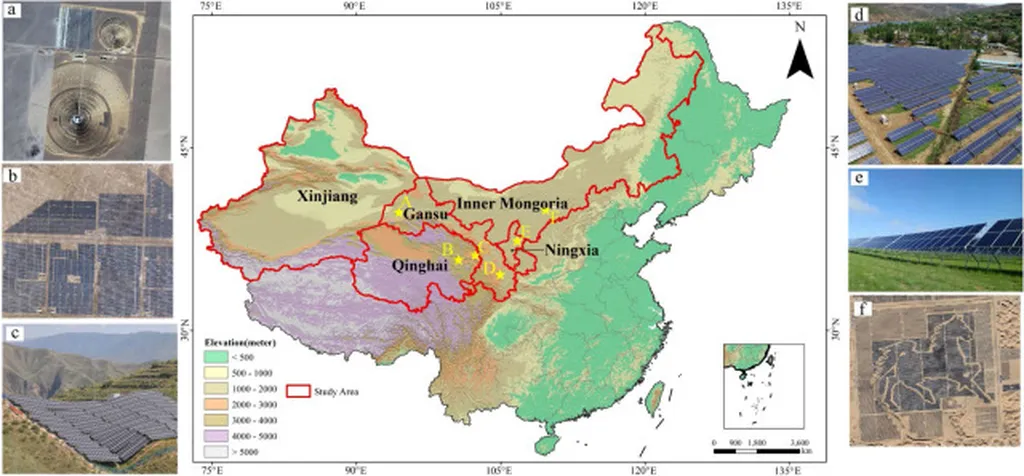In the sun-drenched expanses of Ningxia, China, a silent revolution is unfolding, one solar panel at a time. Researchers, led by Heao Xie from the China University of Mining and Technology-Beijing, have been meticulously tracking the rapid expansion of photovoltaic (PV) installations across the region, using a powerful combination of remote sensing and deep learning. Their findings, published in the journal *Remote Sensing* (translated from Chinese as “Remote Sensing”), offer a compelling glimpse into the future of renewable energy and its environmental implications.
Ningxia has become a strategic hub for China’s PV industry, thanks to its abundant solar resources and favorable geoclimatic conditions. Between 2015 and 2024, the total area covered by PV sites in Ningxia ballooned from a modest 59.62 square kilometers to a staggering 410.06 square kilometers. This exponential growth, driven largely by policy incentives, has transformed the region’s landscape and, as Xie’s team discovered, its microclimate.
The researchers employed advanced deep learning algorithms to analyze satellite imagery from Gaofen-1 (GF-1) and Landsat8. Among the semantic segmentation models, DeepLabV3+ emerged as the top performer, achieving impressive accuracy rates in PV extraction. “The model’s performance was exceptional,” Xie noted, “with a Mean Intersection over Union of 91.97% and an F1-score of 89.11%.” These high accuracy rates, further refined by manual correction, provided a robust foundation for the team’s subsequent analyses.
One of the most intriguing aspects of the study was its investigation into the thermal environmental effects of PV installations. By inverting land surface temperatures and conducting spatial buffer analyses, the researchers found that PV sites induced significant daytime cooling effects within a 100-meter radius. On average, ambient temperatures dropped by 0.19 to 1.35 degrees Celsius, with the most pronounced cooling occurring in western desert regions during winter. “We observed a maximum temperature differential of 1.97 degrees Celsius in these areas,” Xie revealed, highlighting the potential for PV installations to mitigate local heating effects.
However, the cooling effects were less pronounced in agricultural zones, where vegetation-PV interactions played a complex role. This nuanced finding underscores the importance of considering local ecological contexts when planning large-scale PV deployments.
The study’s insights are not just academically significant; they hold substantial commercial implications for the energy sector. As the world increasingly turns to renewable energy sources, understanding the spatial and temporal dynamics of PV expansion, as well as its environmental impacts, will be crucial for stakeholders. The “remote sensing + deep learning” framework validated by Xie’s team offers a powerful tool for monitoring and optimizing PV installations, ensuring that they deliver both energy and ecological benefits.
Looking ahead, this research could shape future developments in renewable energy monitoring and planning. By providing empirical data on the eco-environmental impacts of PV installations, it offers critical support for energy-ecology synergy planning in arid regions and beyond. As the global PV market continues to grow, the insights gleaned from Ningxia’s solar revolution may well illuminate the path forward for other regions seeking to harness the power of the sun.
In the words of Heao Xie, “Our study not only highlights the rapid expansion of PV installations in Ningxia but also demonstrates the potential for renewable energy to positively influence local microclimates. This is a promising avenue for future research and development in the energy sector.” With the findings published in *Remote Sensing*, the stage is set for further exploration and innovation in this dynamic field.

